Introduction
In the fast-paced world of software development, the combination of Minimum Viable Product (MVP) and Agile methodologies has proven to be a game-changer. The MVP approach focuses on launching a product with essential features to meet early adopters' needs, while Agile methodologies prioritize iterative development and adaptability. Together, they enable teams to swiftly respond to user feedback and improve their offerings, fostering a more efficient and responsive development process.
This article delves into the intricacies of integrating MVP with Agile, exploring the key roles within an MVP development team, the numerous benefits of adopting Agile, and the best practices for building an MVP. Additionally, it covers crucial aspects such as defining MVP goals and scope, prioritizing features, gathering feedback, managing stakeholder expectations, balancing functionality and quality, and scaling from an MVP to a full product. By understanding and implementing these strategies, teams can significantly enhance their product development efforts and ensure success in the competitive software market.
Understanding MVP and Agile Methodologies
The Minimum Viable Product (MVP) focuses on launching a product with essential features to meet early adopters' needs and collect feedback for future development. Integrating MVP with flexible methodologies, which prioritize iterative development and adaptability, enables teams to quickly react to user feedback and enhance their offerings. Flexible methodologies have gained popularity because of their adaptability and efficiency, offering a clear difference from the conventional waterfall model. Research indicates that almost half of companies in 19 nations have embraced this methodology for more than three years, utilizing its capacity to accelerate projects and improve adaptability.
The focus on collaborative teamwork and customer needs aligns perfectly with the MVP approach. By encouraging direct interaction and dismantling project barriers, this methodology supports a setting where input can be rapidly incorporated into the development process. This collaboration is crucial, as the lack of it can lead to misalignment with market needs, wasting time and resources.
Furthermore, flexible methodologies, such as Kanban, offer visual approaches to manage tasks and stages efficiently. This clarity in workflow ensures that teams can adapt to changing requirements and focus on end-user needs, thereby reducing the risk of developing an unappealing item. The iterative nature of this methodology also allows for continuous testing and refinement, ensuring that any potential issues are addressed promptly.
In essence, integrating MVP with flexible methodologies provides a robust framework for developing offerings that are both market-ready and adaptable to user feedback, ultimately driving success in the fast-paced world of software development.
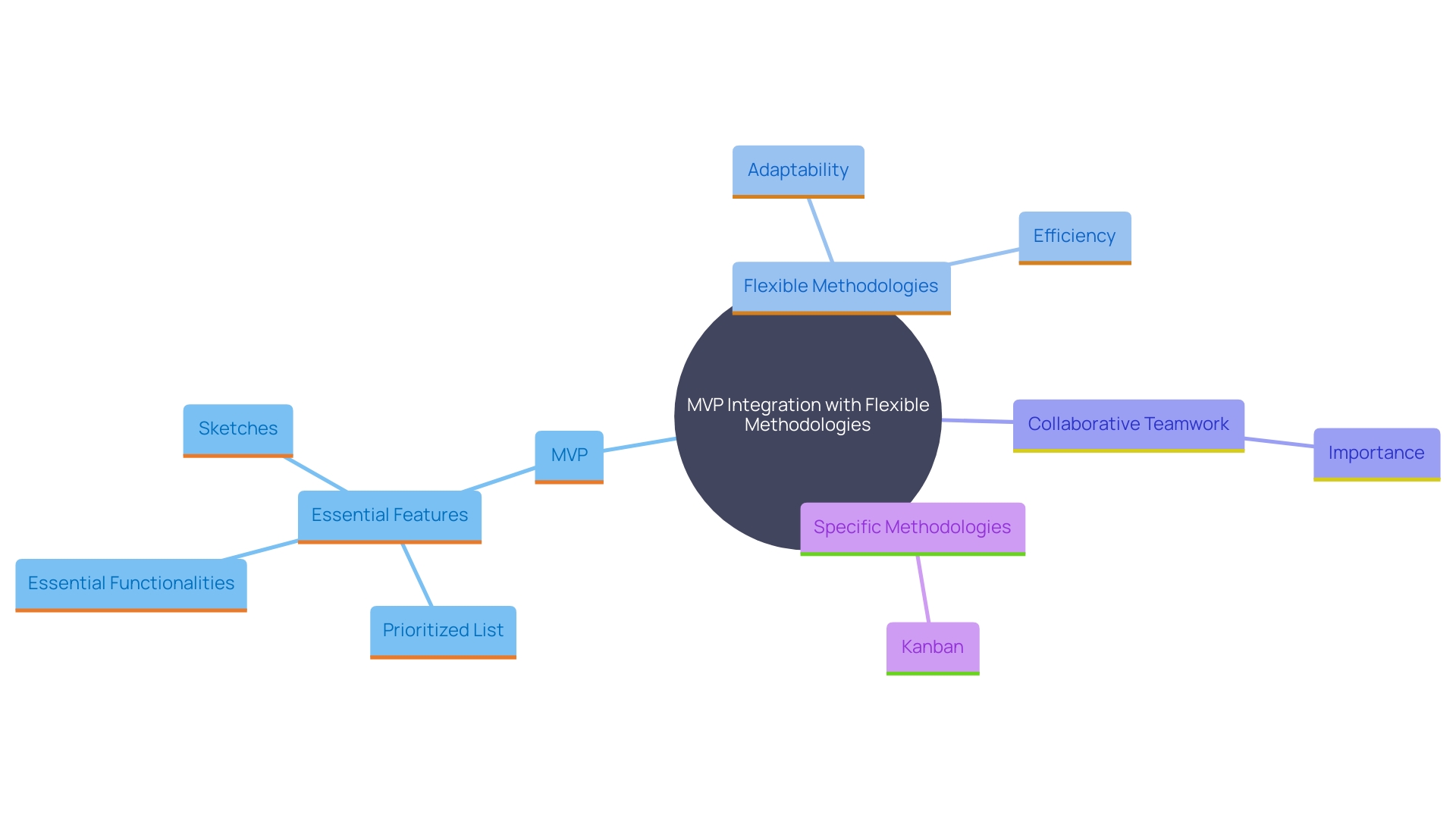
Key Roles in an MVP Development Team
An effective MVP development team needs a diverse range of roles and skills to ensure the project's success. The Owner is pivotal in defining the vision and priorities, guiding the team toward clear objectives that align with the broader strategy. The Scrum Master facilitates the iterative process, promoting collaborative teamwork and maintaining a sustainable working pace, which is crucial for the successful implementation of iterative methodologies.
Developers are essential in constructing the item, with their progress assessed mainly by the functionality of the software they create. This aligns with the Agile principle that prioritizes working software as the main indicator of progress. Quality Assurance testers play a critical role in ensuring the item meets quality standards, identifying and resolving issues early to prevent future problems.
Furthermore, including a UX/UI designer can significantly enhance the user experience from the outset. Good designers immerse themselves deeply in the development of the item, often becoming co-authors of it. Their involvement ensures that the item is not only functional but also user-friendly, meeting the emotional and social needs of the users.
Creating a balanced and diverse team fosters innovation and effective problem-solving. Encouraging cross-functional collaboration and knowledge sharing within the team can lead to richer, more innovative solutions, as each member brings their unique perspectives and strengths to the table. This method not only improves the offering but also helps create a more unified and driven team, fostering long-term success in software projects.
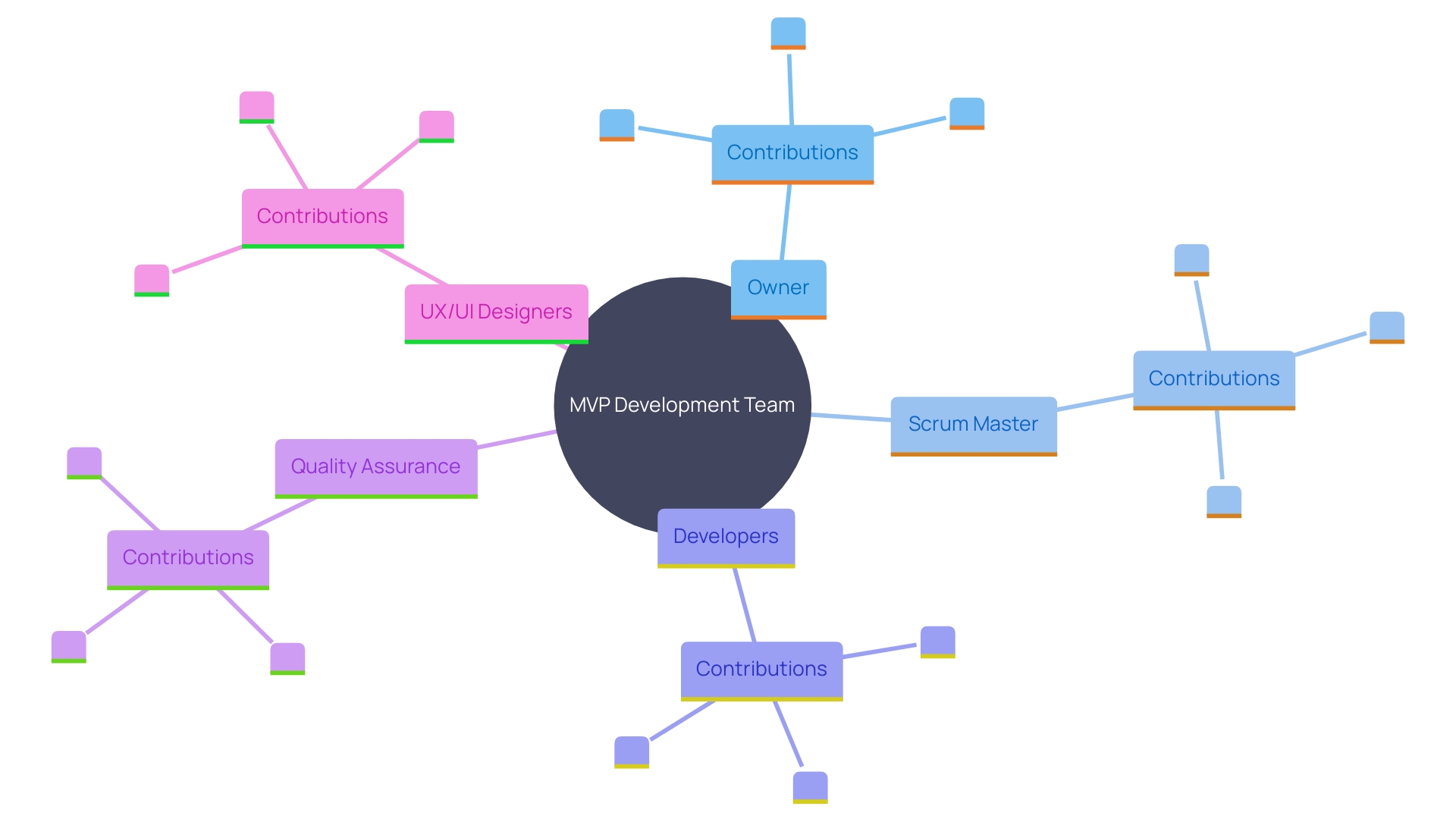
Benefits of Agile in MVP Development
Embracing a flexible methodology for MVP development offers numerous advantages, including increased adaptability, faster market launch, and improved stakeholder engagement. The iterative methodology allows teams to consistently enhance the offering based on authentic user feedback, which reduces the chance of developing features that do not satisfy market needs. This iterative process is particularly advantageous as it ensures that testing and adjustments occur throughout the project, preventing late-stage issues and aligning the product closely with end-user needs.
Furthermore, flexible methodologies promote teamwork and creativity. By encouraging ongoing engagement among team members, the methodology fosters the development of creative solutions and enhances team spirit. This collaborative environment is essential in navigating the complexities of modern software development, where adaptability and responsiveness are crucial.
The popularity of this methodology has surged, replacing traditional methods like Waterfall, due to its effectiveness in managing changing requirements and focusing on client needs. A study by Organize Agile revealed that nearly half of organizations in 19 countries have been employing adaptive practices for over three years, underscoring its global adoption and success. As this methodology continues to develop, it remains a cornerstone of contemporary software engineering, providing a dynamic and customer-focused approach to development.
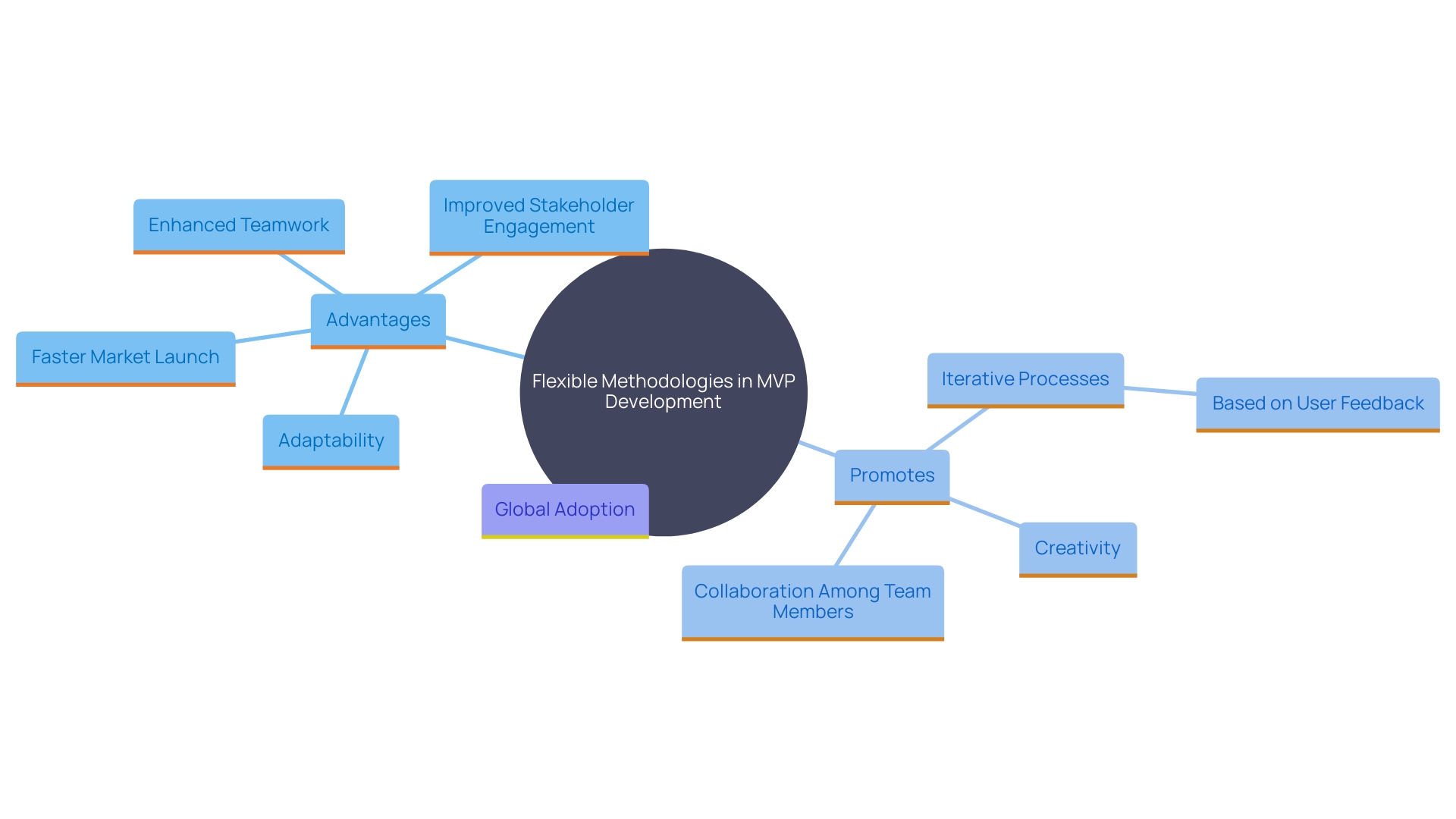
Best Practices for Building an MVP with Agile
To build an effective MVP using Agile, teams should adhere to best practices that ensure the delivery of a product that meets user needs and facilitates future growth. Begin by explicitly outlining the MVP’s objectives and prioritize elements based on user requirements and competitor evaluation. Concentrating on fundamental aspects that are essential for the MVP to achieve its main objective is vital. Extra functionalities can improve the product but are not essential for the initial launch.
Maintaining open communication among team members is vital, as Agile methodology thrives on collaboration and continuous improvement. Develop a solid backlog that reflects the most critical features. Regularly gather feedback from users and be willing to pivot based on that feedback. This approach not only aids in establishing a solid groundwork and devoted clientele but also offers valuable insights and feedback for enhancements and future market expansions.
Plan iterations that allow for quick releases and use version control to manage changes efficiently. Emphasize testing throughout the development process to catch potential issues early. As Teresa Torres emphasizes, synthesizing customer interviews into actionable insights can significantly enhance improvements in offerings. Agile’s dynamic and adaptable approach to project management ensures that the end product delivers value to clients while allowing for flexibility in handling changing requirements.
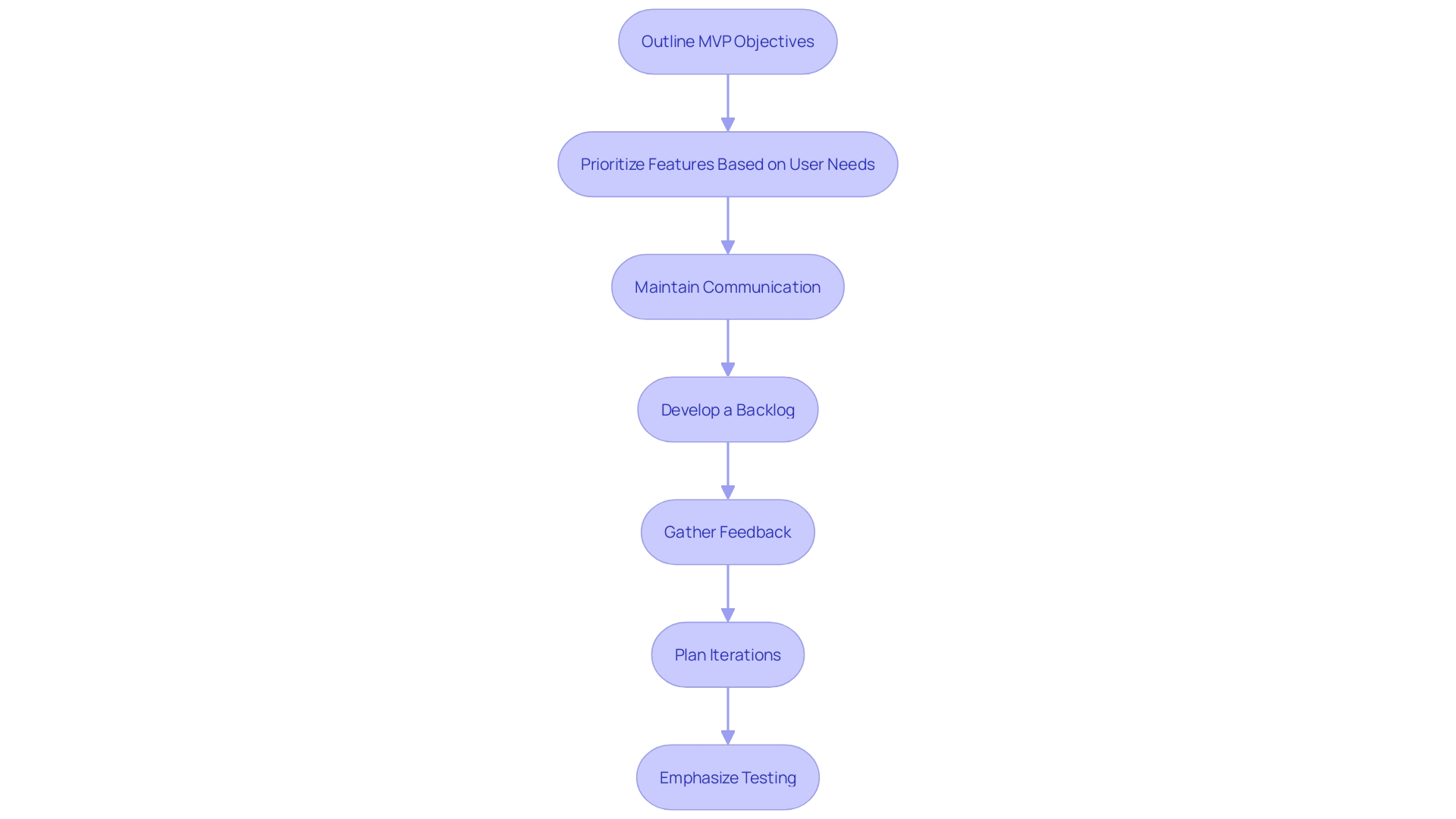
Defining MVP Goals and Scope
Defining clear goals and scope for the MVP is essential to keep the development process focused. Teams must start by determining the main issue the MVP seeks to resolve and outline the essential characteristics that tackle this issue. For example, when constructing Crypto Use Pay, a cryptocurrency payment gateway, the process begins by enumerating all intended attributes and performing an analysis to rank them. Only the essential functionalities should make it to the MVP, as visualized through sketches. This approach ensures that the MVP remains minimal yet functional, allowing teams to allocate resources effectively and deliver maximum value.
Chuks Ejechi emphasizes starting small and iterating quickly, using MVPs to gather feedback and make improvements. This method helps in validating assumptions and hypotheses about the target market, user preferences, and problem-solution fit. By concentrating on essential attributes, teams can enhance their concept based on actual user behavior and feedback. This validation process reduces the risk of misallocating resources and ensures that the MVP meets the core needs of its users.
Furthermore, establishing a clear vision for the offering that outlines what, who, and why is essential. This clarity helps align the team and stakeholders, ensuring that everyone is on the same page and working towards a common goal. By balancing speed and quality, product development teams can deliver products that delight customers and drive growth. Ultimately, it's about delivering value to users and iterating relentlessly in pursuit of excellence.
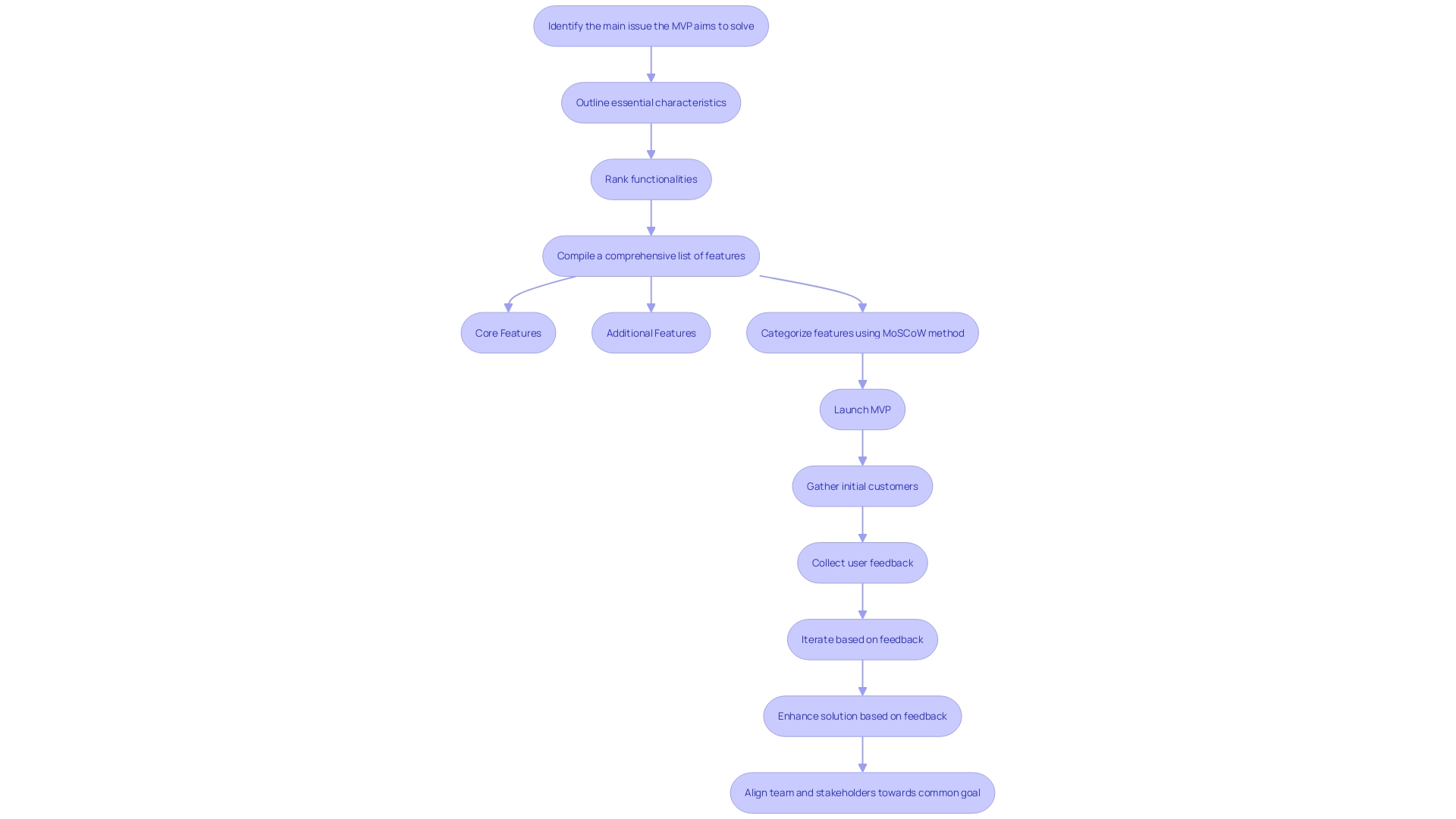
Prioritizing Features and Creating a Backlog
Creating a prioritized list of functionalities is a cornerstone of efficient MVP development. By leveraging techniques like Moscow (Must have, Should have, Could have, Won’t have), teams can effectively categorize elements based on their importance. This method ensures that the most critical functionalities are delivered first, making the MVP not only viable but valuable for early users.
Consider Airbnb's initial version as a prime example. Their basic website lacked payment integration and a map view, yet it focused on solving the core problem quickly. The goal was to launch fast, gather user feedback, and iterate based on real-world use. This approach emphasizes the significance of prioritizing crucial aspects over perfection.
Effective prioritization can transform product development. It assists groups in preventing excess additions, ensuring that each element aligns with customer needs and provides maximum value. As Steve Harrington, Lead Product Manager at Bubble, puts it, 'Prioritization is always tricky and can be an art as much as a science.' Employing structured frameworks like RICE can aid in making informed decisions that balance immediate impact with long-term vision.
In today's competitive environment, comprehending what makes up a minimum viable aspect (MVF) is essential. MVFs are the collection of attributes required to address main customer needs while staying marketable. This focus on core functionalities allows startups to validate their business ideas and gain valuable insights for future development.
By following a structured approach and leveraging MVP development services, you can create a product that effectively addresses the core needs of your target audience while setting the stage for future growth. Recall, the aim of an MVP is to confirm your business concept and offer important insights for additional progress, so concentrate on delivering key aspects and refining based on actual user input.
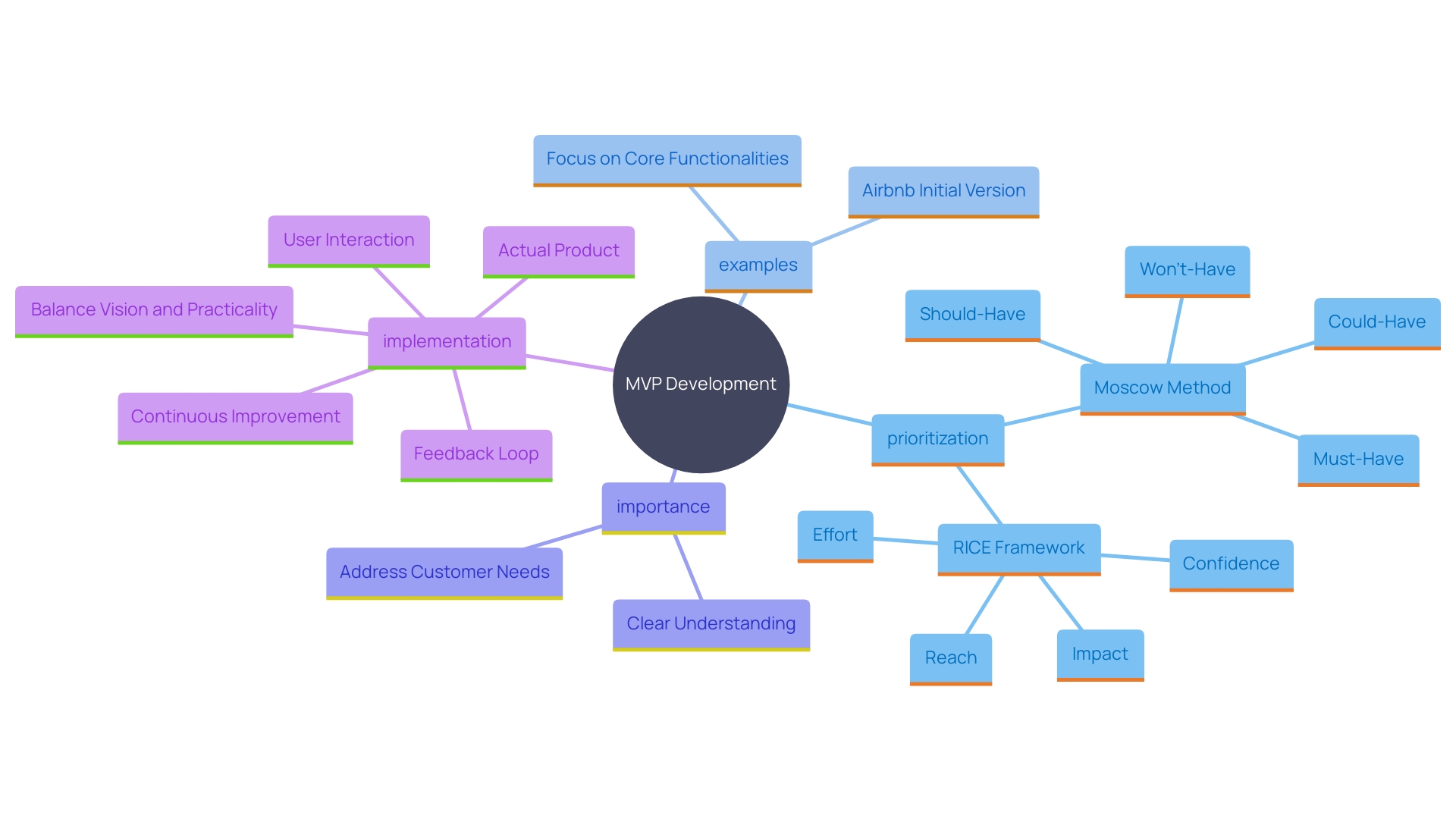
Gathering Feedback and Iterating
Feedback is the cornerstone of the flexible development process. After each iteration or sprint, teams should actively solicit input from users to understand their experiences and challenges. This feedback should be analyzed and used to inform subsequent development cycles, allowing the team to make data-driven decisions that enhance the MVP’s features and usability. Reflecting on past sprints through retrospective meetings is essential in pinpointing successes and areas for improvement. According to a study by Juan M. Ferreira, usability mechanisms like Abort Operation and Preferences significantly enhance system usability, emphasizing the importance of continuous feedback collection and analysis. To tackle the challenges of interpreting feedback, companies should implement a combination of qualitative and quantitative methods and ensure sufficient resources for data analysis. As Anastasiia Tkalich notes, effective feedback interpretation can be facilitated by telemetry dashboards, helping teams prioritize and communicate changes efficiently. By incorporating these practices into the Agile workflow, teams can continuously improve their offerings, ultimately leading to higher user satisfaction and project success.
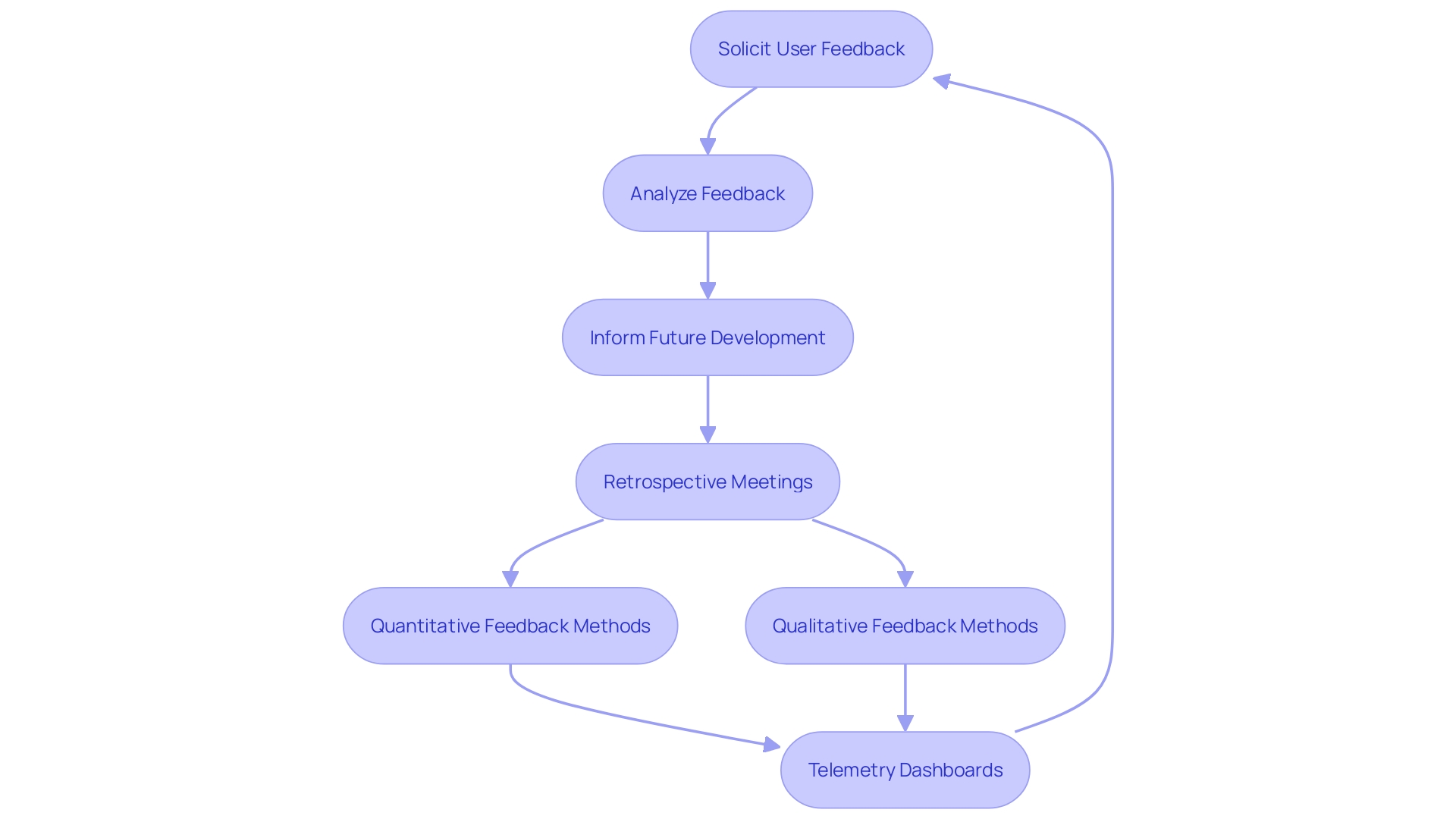
Managing Stakeholder Expectations
Effective communication with stakeholders is crucial for managing expectations during the MVP development process. Regular updates on progress, challenges, and scope changes help maintain stakeholder engagement and trust. By setting realistic timelines and clearly articulating decisions, you can foster a collaborative environment and ensure alignment on project goals.
Investing in a robust structure and clear communication processes is equally important as creating the item itself. Building an MVP typically takes 3 to 4 months, but confusion during this phase can lead to delays. It's essential to concentrate on providing fundamental functionalities and iterating based on user input to meet the primary needs of your target audience. This structured approach not only validates your business idea but also sets the stage for future growth.
Real-world examples show that companies often fail in this area and learn the hard way. Engaging stakeholders actively by allocating dedicated resources—time, funding, and infrastructure—can foster shared ownership, trust, and transformative outcomes. This approach highlights the significance of engaging communities, organizations, and individuals during the development process to ensure the outcome aligns with real-world needs and priorities.
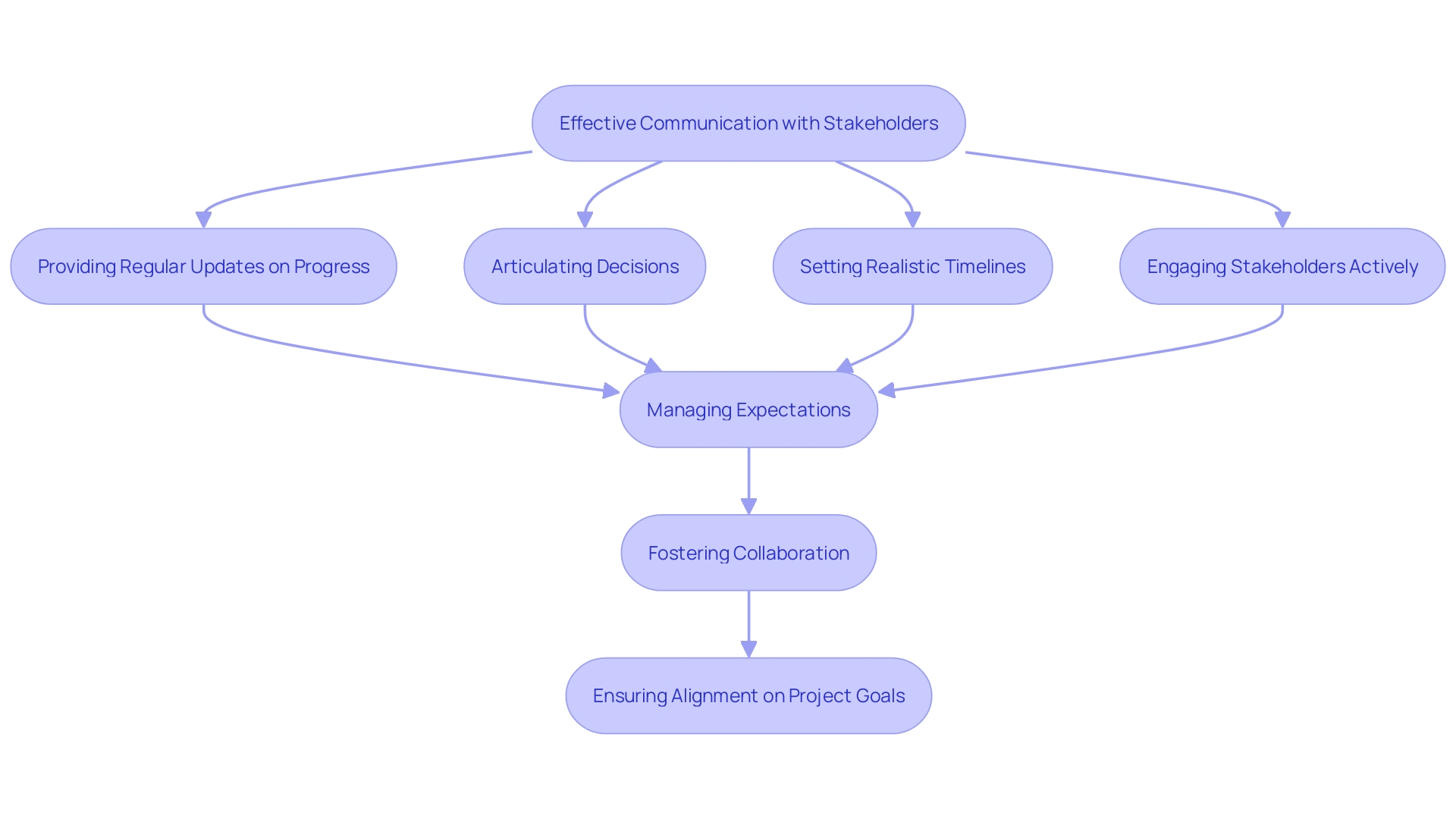
Balancing Functionality and Quality
While the goal of an MVP is to launch quickly, it is crucial not to compromise on quality. Striking a balance between implementing essential features and ensuring they function as intended is key. Regular testing and the use of AI-powered testing tools can revolutionize the QA process, making it more efficient and thorough. AI testing tools analyze code, identify patterns, and predict potential issues, helping to maintain high quality of the offering. Additionally, adopting DevOps practices can streamline workflows and enhance collaboration, further ensuring the reliability and scalability of your MVP. By leveraging these advanced methodologies, companies can validate their business ideas and gather valuable insights for future development, ultimately delivering an offering that meets user needs and aligns with business objectives.
Scaling from MVP to Full Product
Transitioning from an MVP to a complete offering involves a meticulous evaluation of user feedback and market responses. This feedback is invaluable for prioritizing aspects that will make the most significant impact. Conduct surveys, interviews, and focus groups to gather insights about user needs and preferences. 'For example, during the creation of Crypto Use Pay, emphasizing vital functionalities was crucial, guaranteeing only the most necessary components were incorporated in the initial offering.'.
Planning for scalability is equally important. Invest in a robust architecture and infrastructure that can support future growth. The MVP journey is not just about demonstrating potential but also preparing the startup to raise funds with limited resources. Examining rivals' offerings assists in recognizing favored characteristics and voids in the market, directing the creation of further features and improvements.
Engaging with users to understand their evolving needs is crucial. Continuous feedback loops ensure the final product remains relevant and competitive. This approach aligns with the experiences of industry leaders like Capgemini and SoFi, who emphasize the importance of user-centric development and strategic scalability.
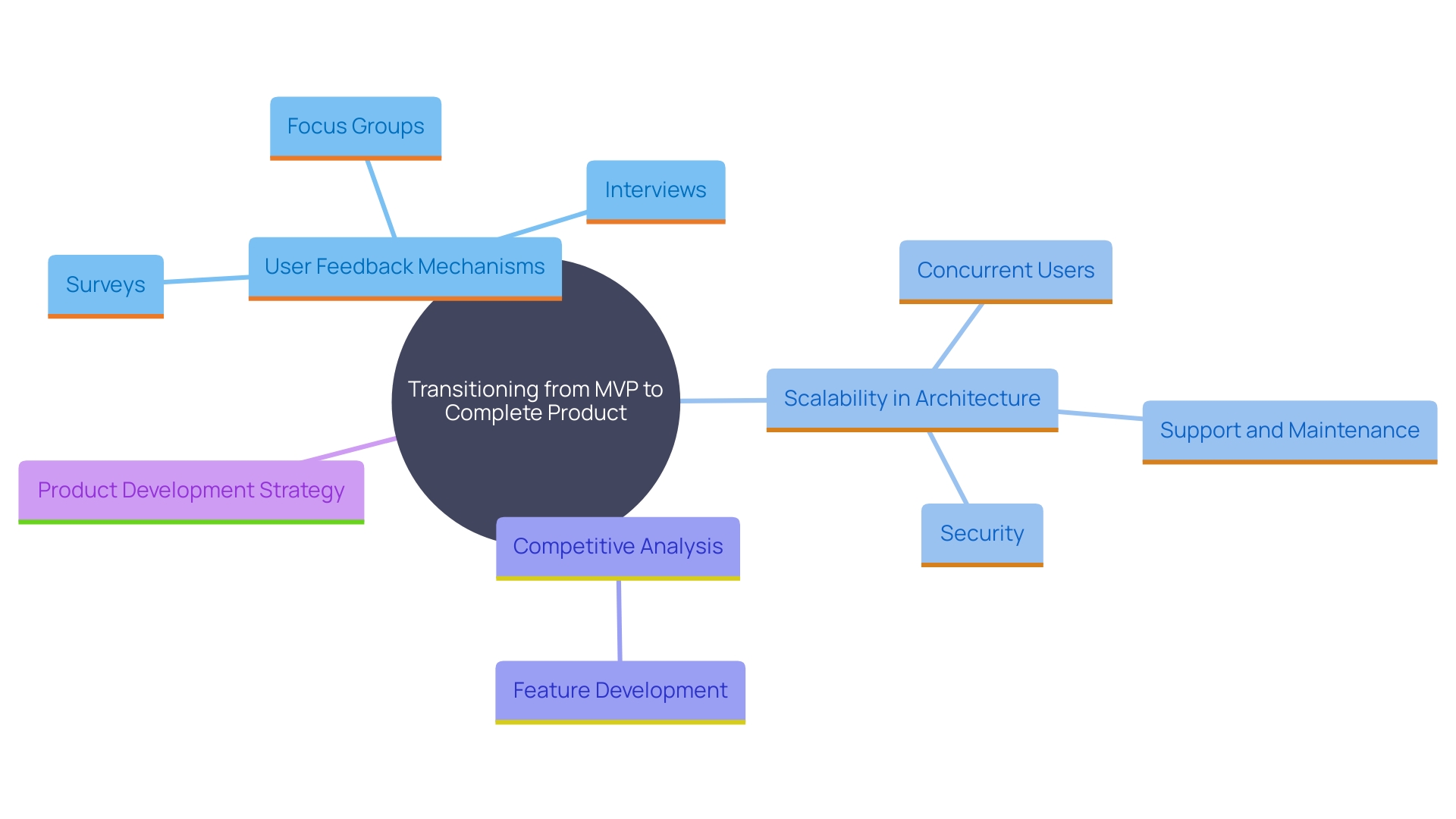
Conclusion
Integrating the Minimum Viable Product (MVP) approach with Agile methodologies presents a powerful strategy for software development. This combination not only accelerates time-to-market but also enhances responsiveness to user feedback, ensuring that products are closely aligned with market needs. The emphasis on collaboration and iterative development facilitates a dynamic environment where teams can continuously refine their offerings, ultimately leading to greater customer satisfaction and project success.
Key roles within an MVP development team, including the Product Owner, Scrum Master, developers, and UX/UI designers, play a critical part in driving the project forward. Each role contributes unique skills and perspectives that foster innovation and enhance problem-solving capabilities. By prioritizing effective communication and collaboration, teams can navigate the complexities of product development more efficiently, resulting in a cohesive and motivated workforce.
Best practices for building an MVP, such as clearly defining goals, prioritizing features, and maintaining a structured feedback loop, are essential for ensuring that the product meets user needs. By focusing on core functionalities and continually iterating based on user insights, teams can avoid pitfalls associated with feature bloat and misalignment with market demands. This disciplined approach not only validates business ideas but also sets the foundation for future growth and scalability.
In conclusion, the integration of MVP and Agile methodologies offers a robust framework for developing successful software products. By understanding the intricacies of this approach and implementing best practices, product development teams can enhance their efficiency, adaptability, and ultimately their success in a competitive landscape.





